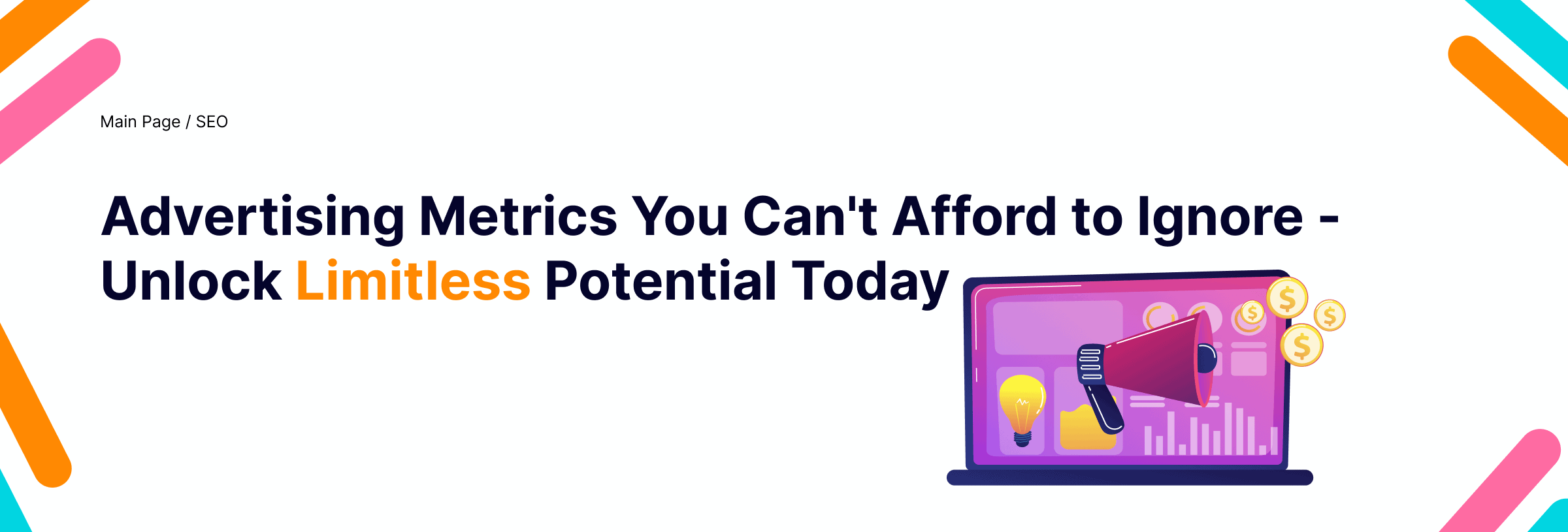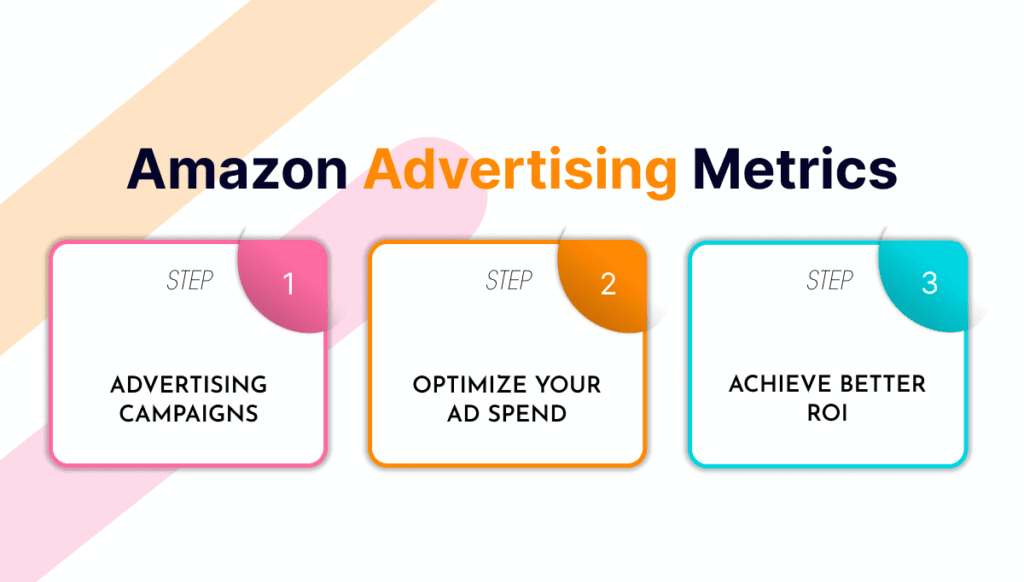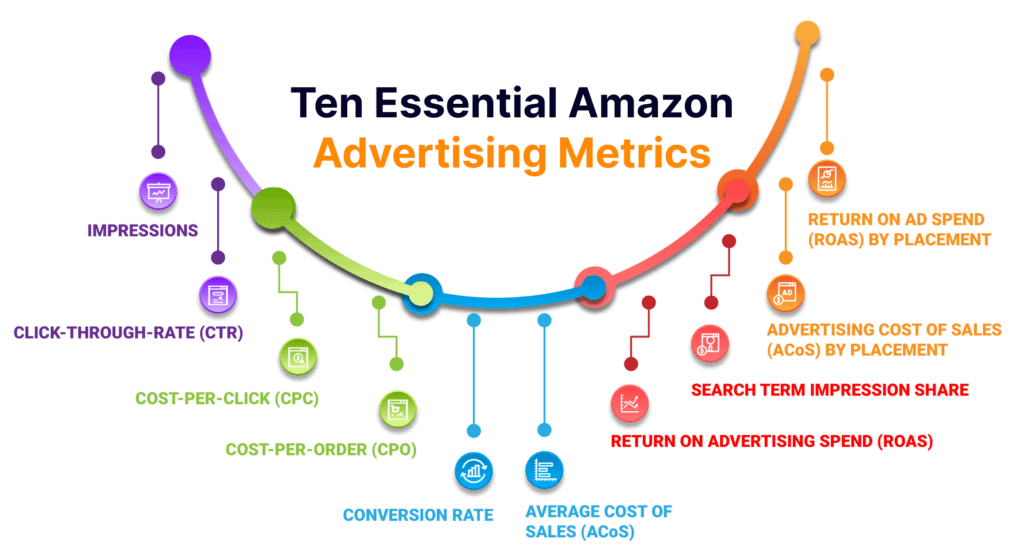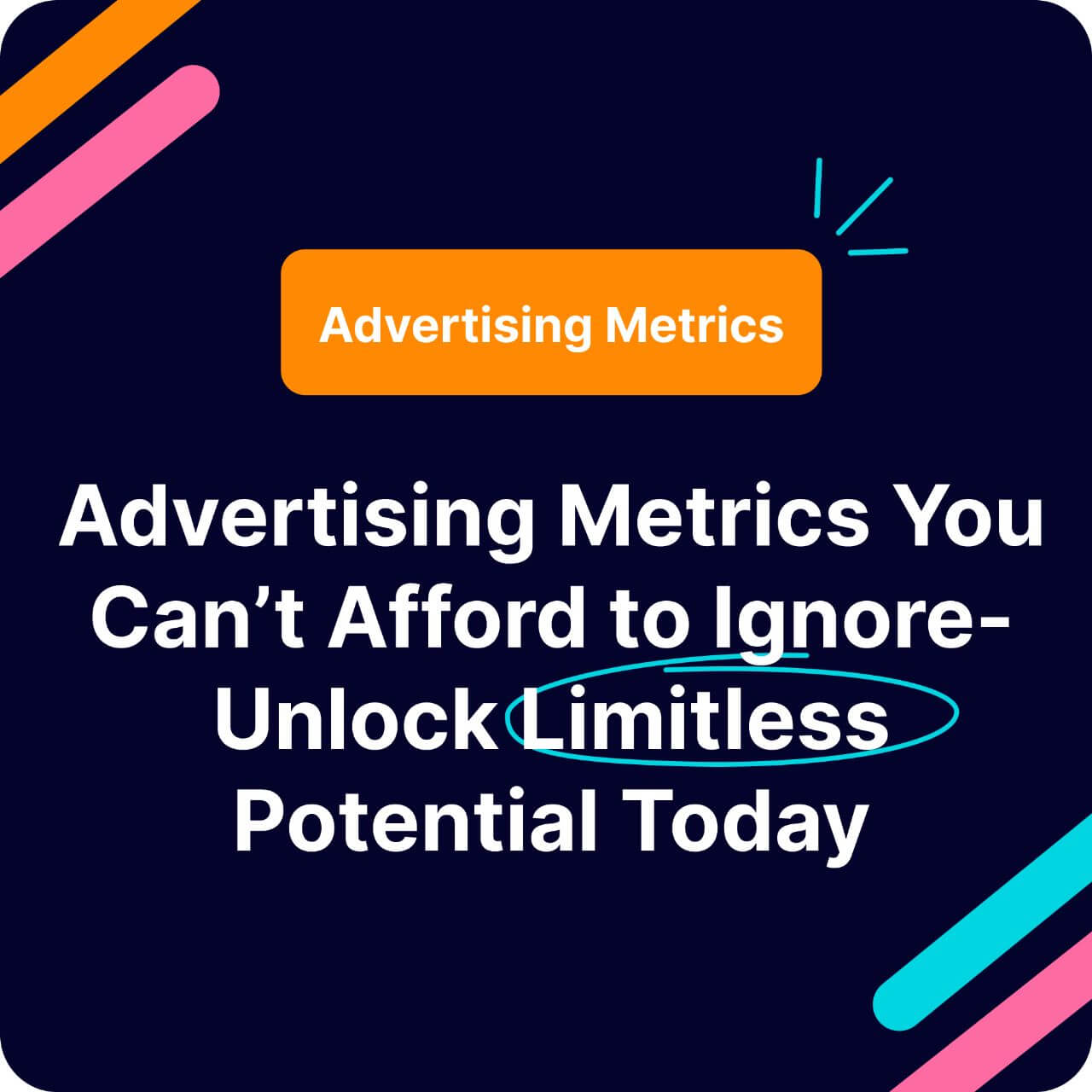
Are you sure you’re reaping the most your of your advertising budget?
This a question every advertising team is afraid to answer.
But what if we told you..
There’s a way you could know if you’re maximizing your ad spend.
Most advertisers ignore it or don’t even know about it…
Amazon Advertising Metrics
It’s highly crucial to keep track of your advertising metrics to optimize your campaigns.
Tracking these metrics can help you identify areas for improvement in your:
- Advertising campaigns
- Optimize your ad spend
- Achieve better ROI

Most importantly, tracking these metrics will help you make data-driven decisions.
And you’ll be able to get your ads in front of the right people
… at the right time!
So let’s get to it, and start crushing those ad campaigns!
Here are ten essential Amazon advertising metrics you should be tracking and how to calculate them.

- Impressions
Monitoring impressions can help you gauge the visibility of your ads and the reach of your advertising campaigns.
Although high impressions do not guarantee success, they increase the exposure of your ad.
How to calculate it: The number of times your ad is displayed to potential customers.
- Click-Through Rate (CTR)
CTR is an indicator of the effectiveness of your ads and how well they resonate with your target audience.
In simple words…
CTR is a crucial metric that measures how many shoppers click on your ad after seeing it.
A high CTR indicates that your ad is compelling enough to get the attention of shoppers.
How to calculate it: The number of clicks your ad receives divided by the number of impressions it receives.
Click-through rate (CTR) = Total clicks / Total impressions x 100
- Cost-Per-Click (CPC)
CPC is vital for optimizing your Amazon advertising campaigns to ensure that you’re getting the most out of your advertising budget.
Your goal as an advertiser is to bid the maximum cost you are willing to pay per click on your ad, which is referred to as your CPC bid.
How to calculate it: The total cost of your ad campaign divided by the number of clicks it receives.
Cost Per Click (CPC) = Total cost of ad campaign / Number of clicks
- Cost-Per-Order (CPO)
CPO is crucial for determining the profitability of your campaigns and ensuring that you’re achieving a positive ROI.
How to calculate it: The total cost of your ad campaign divided by the number of orders it generates.
Cost Per Order (CPO) = Total Cost of Ad Campaign / Number of Orders Generated
- Conversion Rate
Conversion rate is a vital indicator of the effectiveness of your advertising campaigns and the relevance of your product offerings.
CR measures the number of customers who purchased your product after arriving at the product detail page.
A high CR indicates that your ad or product detail page is highly relevant to potential customers.
How to calculate it: The number of orders generated by your ad campaign divided by the number of clicks it receives.
Conversion Rate = Number of Orders / Number of Clicks x 100
- Average Cost of Sales (ACoS)
ACoS helps you optimize your advertising campaigns to ensure that you’re achieving a positive ROI.
ACoS measures advertising efficiency.
A lower ACoS means that you are spending a smaller percentage of sales on advertising.
How to calculate it: The total cost of your ad campaign divided by the total sales generated.
ACoS = Total Ad Campaign Cost / Total Sales Generated x 100
- Return on Advertising Spend (ROAS)
ROAS helps you assess the effectiveness of your campaigns and determine whether they’re generating a positive ROI.
A RoAS less than one is considered negative.
How to calculate it: The total sales generated divided by the total cost of your ad campaign.
ROAS = Total Sales Generated / Total Ad Spend
- Search Term Impression Share
Search term impression share helps you optimize your Amazon advertising campaigns to ensure that your ads are showing up for the right search terms.
How to calculate it: The number of impressions your ads receive for a specific keyword search divided by the total number of impressions they were eligible to receive.
Impression Share = Number of Impressions for a Specific Keyword Search / Total Number of Impressions Eligible to Receive
- Advertising Cost of Sales (ACoS) by Placement
ACoS by placement helps you optimize your campaigns to ensure that you’re getting the most out of your ad placements.
How to calculate it: The total cost of your ad campaign divided by the total sales generated for each ad placement.
Ad Placement ROI = Total Sales Generated for Ad Placement / Total Cost of Ad Campaign
- Return on Ad Spend (ROAS) by Placement
ROAS by placement helps you assess the effectiveness of your ad placements and optimize your campaigns accordingly.
How to calculate it: The total sales generated for each ad placement divided by the total cost of your ad campaign for that placement.
ROAS = (Sales Generated for Ad Placement) / (Total Cost of Ad Campaign for Placement)
Conclusion

If you want to nail your advertising game and rake in some serious sales..
Keeping track of these Amazon advertising metrics is super important.
And let’s be real – ignoring these metrics is a one-way ticket to Ad Spend Wasteland.
Without a handle on impressions, CTR, and other crucial metrics..
You could be throwing your money away on ad campaigns that just aren’t hitting the mark with your audience.
By keeping an eye on these numbers, you can get a solid understanding of:
- How are your ads performing
- What’s working and what’s not
- Where you should focus your energy to optimize your ad spend and drive more clicks and conversions.
So, it’s worth taking a few minutes to calculate your impressions, CTR, CPC etc, to see where you stand.
If you’re really serious about crushing it on Amazon and growing your business..
Make sure you’re tracking these key metrics like a pro.
It’s the smartest move you can make to take your advertising game to the next level and start seeing REAL results.
